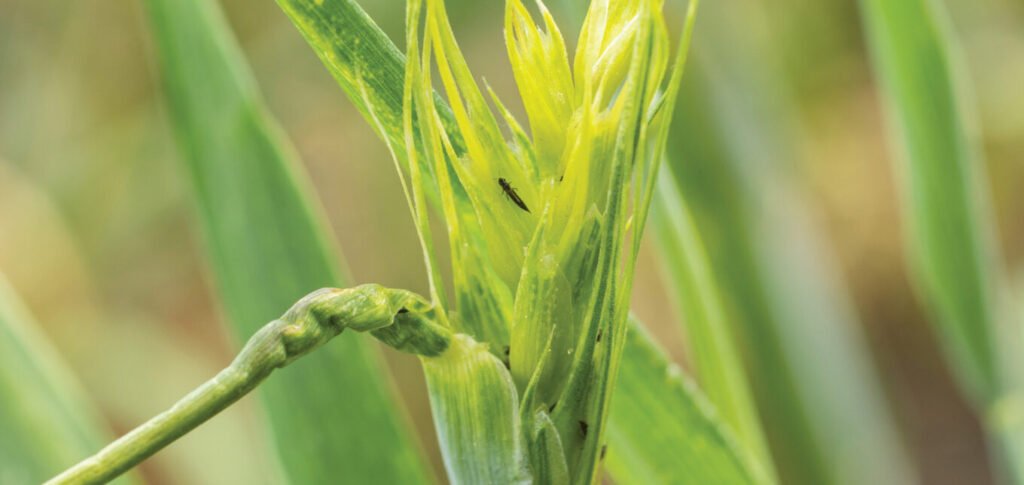
Using trap crops in your garden is a smart, natural way to cut down on pests. Learn how to work them into your companion planting strategy this season.
We’re all familiar with those annoying garden pests, right? Squash bugs, cabbage moths, hornworms, aphids, flea beetles, potato beetles—they can really mess up your veggie patch.
I’m a big fan of companion planting to keep these pests in check.
But companion planting isn’t just about repelling bugs with certain plants. It’s also about bringing in pollinators, beneficial insects, and predators.
And the last piece of the puzzle? Trap cropping.
What Is Trap Cropping?
Trap cropping means planting crops that pests love even more than your main plants.
These “trap crops” lure pests away from your valuable harvest. Think of them as sacrificial plants—you can scatter them through your garden or line them around the edges of your beds.
Picture them like frontline soldiers, ready to take the hit for the greater good of your garden.
You’ll need to check these plants regularly and deal with the pests.
There are two ways to use trap crops:
- Unrelated plants (different plant family)
- More attractive varieties (same plant family)
Below, I’ll list some common trap crops and answer a few FAQs.
Moonflowers can lure hornworms away from your tomatoes.
Common Unrelated Trap Crops
These are plants from a different family than your main crop.
- Nasturtium – A magnet for aphids. Plant it near any aphid-prone crop, and they’ll swarm the nasturtium instead.
- Moonflower – Great for trapping hornworms. A few sacrificial plants near your tomatoes can save your crop.
- Radish – Pulls in flea beetles and cabbage moths. Tuck them near brassicas or eggplants.
- Sunflowers – Attract stinkbugs. Plant them near tomatoes and peppers, but watch for shading.
- Zinnias – Japanese beetles love them. Grow some to shield vulnerable plants.
- Okra – Draws tomato aphids, stink bugs, and leaf-footed bugs. Works well near tomatoes. (Check out the best okra companions.)
- Tansy – Traps Colorado potato beetles. Plant with potatoes for protection.
Sacrifice turnips to flea beetles to save your broccoli and cabbages.
Common Related Trap Crops
These are from the same family—just a tastier variety for pests.
- Blue Hubbard Squash – A favorite of squash borers, cucumber beetles, and squash bugs. Plant around squash or cucurbit beds.
- Hot Cherry Peppers – Lures pepper maggots away from sweet peppers.
- Cherry Tomatoes – More appealing to leaf-footed bugs and stink bugs than other tomatoes.
- Turnips – Attracts flea beetles. Plant near cabbage and other brassicas.
Tracking Your Own Trap Crops
The list above isn’t exhaustive—you might discover your own trap crops over time.
One year, I planted patty pan squash alongside my zucchini. The squash bugs went straight for the patty pans, and my zucchini lasted longer than ever!
The best way to remember these discoveries? Keep good records.
My Companion Planting Binder (+ Yearly Garden Planner) is the perfect place to jot down what works in your garden each season.
Trap Crop FAQs
My trap crop is covered in bugs—what now?
Check them often and remove pests—either with organic sprays, pulling the plant, or picking them off by hand.
Won’t trap crops attract MORE pests to my garden?
Nope! The pests were coming anyway. The trap crop just gives them a place to gather—one you don’t mind sacrificing—so they leave your main crops alone.
Final Thoughts
Trap cropping is just one piece of the puzzle. Don’t rely on it alone—use it alongside companion plants that repel pests and ones that attract beneficial bugs (like ladybugs, lacewings, and parasitic wasps).
Combined, these methods create a powerful, organic way to protect your garden.
